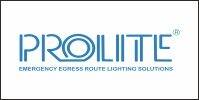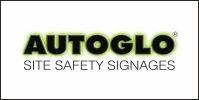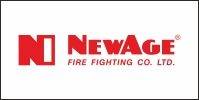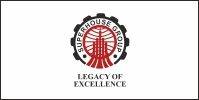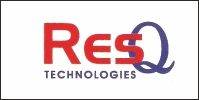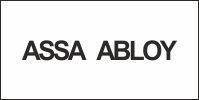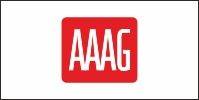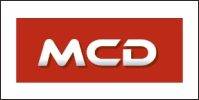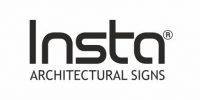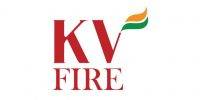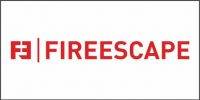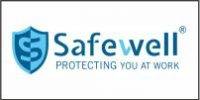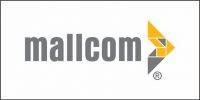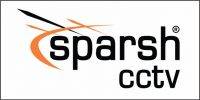 Did you know that the ANSI/ASSP Z10.0 Standard provides a framework for OHS management and industrial hygiene? Here are some tips on how to leverage this standard to better safeguard your workers.
Did you know that the ANSI/ASSP Z10.0 Standard provides a framework for OHS management and industrial hygiene? Here are some tips on how to leverage this standard to better safeguard your workers.
Readers who have been involved in occupational health, safety and environmental matters for a while have probably had an exposure to the concept of risk-based management systems. Many organizations have procedures that are aligned with risk-based approaches consistent with the concepts contained in standards like ISO 14001 (Environmental Management Systems) and ISO 45001 (Occupational Health and Safety Management Systems [OHSMSs]).
Significantly, the American Society of Safety Professionals published a revision to the ANSI/ASSP Z10 standard in late 2019 (now referred to as ANSI/ASSP Z10.0), which includes new requirements that pertain to occupational health and industrial hygiene. This risk-based management system is a national standard on the topic of Occupational Health and Safety Management Systems. It is a consensus standard (as opposed to a regulatory requirement). At a high level, it provides a framework for OHS management that includes several requirements for processes that work together to create a sustainable safety management system.
The standard essentially requires organizations to implement processes in a way that accounts for some real-world business dynamics and pressures—the failure of which to consider could result in the failure to achieve OHS goals. (For a broader overview of the standard, see The New ANSI/ASSP Z10.0 Standard and Its Implementation, in the June 2020 edition of ohsonline.com.)
While the ANSI/ASSP Z10.0 standard requires the identification and assessment of traditional “safety” considerations, it also emphasizes the importance of occupational health and, essentially, industrial hygiene.
Historically, many organizations have developed and applied processes to identify, evaluate and control risks of, in particular, a physical safety nature. Over time there has been an emphasis on hazards stemming from things like falls, the hazardous motion of tools and machinery, process hazards (e.g. pressure, temperature) and acute risks from particular types of work. Risk assessments that include chemical/material considerations will often only identify chemical-related process risks that can result in explosions, fires and chemical releases to the environment, but have not always considered the occupational health component of risk, especially chronic exposures to toxic substances.
ANSI/ASSP Z10.0 emphasizes that the occupational “health” side of things should also be included in assessments and systems. What many may consider “industrial hygiene” (IH) issues are included in this part of assessment. The Standard says that organizations shall identify hazards for risk assessment, and that the assessment of OHS risks includes: “health exposures (e.g. chemical, physical and biological agents), human factors (includes ergonomics) [and] workplace violence and safety hazards” (ANSI/ASSP Z10.0, section 8.3).
The corresponding guidance manual for ANSI/ASSP Z10.0 (ASSP Z10.100-2019 Guidance and Implementation Manual for ANSI/ASSP Z10.0-2019 Occupational Health and Safety Management Systems) contains a helpful chapter discussing this new emphasis. It includes examples of several types of IH stressors that may need evaluation.
Those who have used earlier editions of the Z10.0 standard may have wondered to what extent industrial hygiene factors should be included in their risk assessments. Practically speaking, ANSI/ASSP Z10.0 now provides examples of hazards of an IH nature that should be included.
Competence in Industrial Hygiene
While the standard places an increased emphasis on IH, not everyone has the background to anticipate, identify, assess and control that sort of risk. Persons who may be great at identifying “safety” issues and using various qualitative or semi-quantitative (matrix style) risk assessment tools may be left wondering how to apply the concepts to sub-acute IH aspects. Depending upon the industry one is in, IH can include many different topics and areas of expertise, with a wide variety of considerations for planning, sampling technology and data interpretation.
 Traditional IH Assessments and the Link to OHS Risk Assessment Requirements
Traditional IH Assessments and the Link to OHS Risk Assessment Requirements
This article will discuss classic personal air sampling (exposure assessments) and noise testing (sound level measurement and noise dosimetry) factors—what many think of as IH monitoring.
There can be a variety of drivers for why an organization may want to conduct IH monitoring. This can include the assessment of compliance with OSHA and company requirements, the determination of adequacy of engineering controls (for example, local exhaust ventilation), the evaluation of employee complaints and other reasons.
ANSI/ASSP Z10.0 expects that organizations will assess risk to protect worker health and to know and address “legal (e.g. OSHA or contractual) and other requirements” (which could include internal requirements) as well as the needs and expectations of interested parties, including workers.
How should one link these IH related risk assessments while balancing an organization’s risk assessment framework? The organization’s risk policy and assessment methodology should be developed by the organization in a way that best accounts for its needs. Certain methodologies may not mesh well with IH information. There is no one right way to combine the information, and no one technique fits all scenarios. If there is a hierarchy of assessment documentation, the “higher level” documents should in some way link to IH exposure assessments that contain an evaluation of monitoring results, compliance and relative risk. Since work processes and monitoring results can fluctuate, the summary level documents are probably not where you should try to keep detailed and evolving monitoring results. Third party software is available to document, statistically evaluate and trend results.
When is IH sampling needed? A full discussion of this topic is not possible here; the answer must be determined based upon precise company processes and applicable regulations. However, the next few paragraphs describe some considerations.
Fundamentally, employers are obligated to provide a safe workplace. It is up to the employer to ensure that occupational exposures to toxic materials, and noise exposures, are within allowable limits. That does not mean that all exposures need to have air sampling or noise testing accomplished, although there sometimes there are regulatory requirements to do so (depending upon the substance or situation).
For never-before-sampled processes, to determine what actions may be needed, an individual needs to evaluate factors like material inputs and toxicity, applicable regulations, work tasks, mechanical processes and environmental variables. There should be a reason for sampling. In some cases it is necessary and appropriate, and yet in other cases, a qualified individual can review situational factors and historical or related data, and determine that sampling is not required.
The need for follow-up testing should be reassessed on a periodic basis. Some considerations include:
- OSHA regulations sometimes require periodic sampling after initial sampling, depending upon how close the results were to regulatory limits and other factors.
- Changes to raw material composition and form can change exposure levels. If chemical/material “inputs” have changed, sampling may be indicated.
- Exposures can vary, and the potential for variation should be taken into account. Differences can exist between areas, shifts, individual workers, time of year, etc.
- IH monitoring technology continues to improve. Would it make sense to conduct monitoring using newer technologies that sometimes provide better data?
- Evaluate whether or not COVID-19 factors have affected materials of use, production volumes and work methods. If work tasks or control methods have changed in a way likely to change occupational exposures, OSHA sometimes requires new sampling (depending upon the material). Even where OSHA does not specifically require it, new sampling may be needed.
Have there been changes in tools, process equipment or the facility in general? Are tools and machines getting older? Are things still being done the same as when noise dosimetry was last conducted? Have cycle times changed? New noise testing may be warranted.
Pandemic Considerations
While not the focus of this article, the ANSI/ASSP Z10.0 standard discusses, in the section on Emergency Preparedness, requirements that organizations plan and prepare for issues that include those of a public health nature. This was written before the COVID-19 pandemic and could now be seen as a bit prescient. OHS professionals have been playing an important role during the COVID-19 pandemic that we are now in. OHS professionals have played an important role before the pandemic, but they might not have always been able to convince organizations to allocate related resources.
Planning required under the Emergency Preparedness section could be interpreted to include the development of plans such as COVID-19 Preparedness and Response Plans, employee training and communication, respiratory protection and mask guidance, the addition of workplace controls and more.
The point here is that there are industrial hygiene related requirements woven into the Emergency Preparedness section of ANSI/ASSP Z10.0, with links to risk assessment, planning and budgeting. You just need to seek them out.
Conclusion
The ANSI/ASSP Z10.0 standard now clearly describes the inclusion of occupational health and industrial hygiene stressors as part of an organization’s risk assessment processes. Compliance to the standard requires that organizations take actions to address
identified risks within the scope of its OHSMS, in a prioritized manner and as driven by its interrelated OHSMS processes.
It is likely that this emphasis will continue and become highlighted in more OHSMS standards over time. What processes does your organization have to conduct solid industrial hygiene related risk assessments? Organizations should plan ahead and ensure the use of competent resources and high-quality monitoring equipment for the most cost effective and helpful evaluations.











